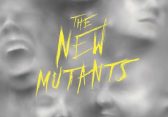Darren Aronofsky is no stranger to the cinematic portrayal of inner demons and the exploration of the human psyche. From shoestring debut, Pi, via Requiem For A Dream to critically acclaimed The Wrestler, Aronofsky’s talent is, undeniably, in depicting the human condition. Like troubled ballet dancer Nina (fearlessly played by Natalie Portman), Black Swan was always going to be under pressure to perform. Long awaited by eager cinema goers and critics alike, Aronofsky’s latest offering manages to deliver with a blend of trademark psychological thrills and art house styling.
Black Swan isn’t pretty. It’s uncomfortable and oppressive. Every scene has been engineered to make you feel uneasy, toying carelessly with every conceivable emotion. Nervous laughter and wincing come as standard. Not surprising really when you consider the subject matter of Aronofsky’s previous work. There are nods to classic horror with jumpy sound cues and visual trickery but also subtle changes in mood and tone, creating a distinctly uneven and disjointed journey.
Black Swan owes every success to its pitch perfect leading ladies, Portman and Mila Kunis, who have both thrown themselves completely into their roles. Like chalk and cheese, the self destructive ballerinas couldn’t be more different. Nina (Portman) is repressed, insecure and fragile while Lily (Kunis) is a free spirit, imprecise and wild. It is the relationship between Nina and Lily that forms the core metaphorical hook in Black Swan. In order to perform as Prima Ballerina in Swan Lake, Nina is forced to free herself from the restrictions of perfection and let go of herself to dance the part of the White Swan’s evil twin, the Black Swan. So begins a journey of self discovery and sexual awakening that stirs the Black Swan inside her. As Cassel’s brooding ballet director, Thomas Leroy, growls ‘Perfection is not just about control. It’s also about letting go’.
This is true of Black Swan itself. Finding perfection in chaos is Aronofsky’s niche. Nina’s unravelling sanity and faltering grip on reality is bundled into a neat, tangible package for the viewer to unwrap. But herein lies the problem. Black Swan and the fate of Nina follows a bumpy and twisted path to an inevitable and foregone conclusion. Despite some unsettling and sometimes disturbing moments, there seems to be an unshakeable rigidity to this tale. However, this is not necessarily a bad thing. Much like the classic ballet at its heart, Black Swan feels familiar, almost like a fable or fairytale. Its outcome does not rely on a dramatic twist or reveal, it unfurls elegantly in a suitably balletic manner instead of hitting you in the face with clichés and cheap shocks.
It is, in essence, a performance within a performance (check out the split credits at the end). We are essentially watching Swan Lake being performed within a modern retelling of Swan Lake (just substitute swans for people). We know the story, we have a good idea of what to expect. Where Black Swan succeeds beyond doubt is in its ability to be suspenseful and completely intoxicating despite this.
Much like a stage production, the performances in Black Swan are undoubtedly exaggerated and over the top. Barbara Hershey steals the show as Nina’s controlling mother, Erica, a bitter and twisted ex-ballerina whose jealousy seeps from every pore. It is far from a subtle portrayal with Hershey revelling in the role, reminiscent of an evil fairytale stepmother or Hitchcock villain. Team this with Cassel’s rather one dimensional turn as ballet director and you’re hard pushed not to boo every time they appear on screen and shout ‘They’re behind you!’. However, this seems to be the perfect foil to Portman’s delicate Nina, who delivers her lines in a terrified whisper.
Aronofsky certainly seems to secure utter commitment from his cast. During filming, Barbara Hershey refused to watch any of scenes shot outside of Erica and Nina’s apartment so she could fully embrace the isolation and reclusive nature of her character while Portman spent 10 months ballet training. Portman is, for the duration of Black Swan, a bone fide ballet dancer. There is never a moment when you doubt that she could dance the role for real and this is what makes her descent into madness so convincing. There is a real sense that Portman pushed herself to the limit for this role, reflecting Nina’s relentless desire to succeed and be the best. This is maybe where Aronofsky’s theme of art- reflecting-life-reflecting-art can be seen in its most real form.
This blurring of reality and fantasy plays a central role throughout the film. There is a mirror in almost every scene, forcing us to acknowledge that what we see could be real or part of Nina’s fracturing psyche. Nina and her opposite Lily (depicted playfully and dangerously by Kunis) convey this theme effectively (if not sometimes too literally, with Nina dressed in pastel shades and Lily in grungy black and greys). There are some highly effective scenes between the two which play out in front of mirrors (most notably in Nina’s apartment when the girls return from a night at a club) that confuse and disorientate the senses. Black Swan flits effortlessly between psychological thriller and classic horror which creates an uncomfortable and exhilarating viewing experience. Set to Clive Mansell’s haunting reworking of Tchaikovsky’s ballet, it’s a treat for the senses, but never a pleasant one.
Like The Ugly Duckling’s even uglier evil twin, Black Swan is an unpleasant experience that is not to be missed.



























